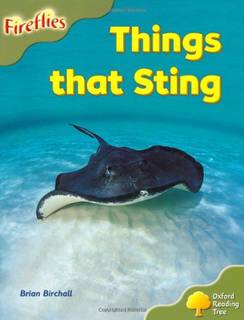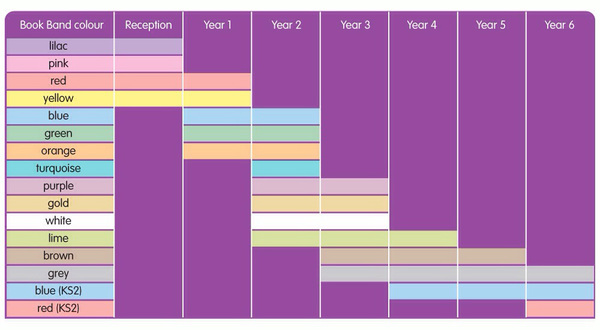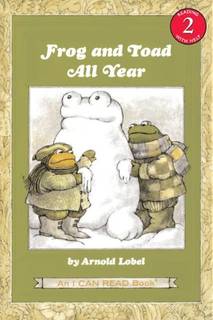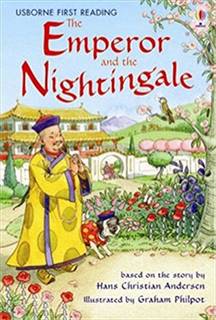Helen's school uses Oxford Reading Tree graded readers, as do apparently 80% of English schools. ("Nobody ever got fired for choosing IBM.") I mostly ignored these when she brought them home, since she was happy to read them at school and we had more interesting things to read, so I missed the clear "Stage N" on the back covers and it was a while before I realised these were graded into quite narrow bands.
This chart comes from a Rhino Reads post "book bands, reading schemes and early readers" which also has lots of other useful information. Of course each publisher seems to have its own system... The Oxford Reading Tree numbers map directly onto the colours, except that pink is 1+ and thus red is 2, yellow 3, etc. Gary Hall has a chart linking ORT numbers to Lexile Levels, which can be found for most books (use the top-right "quick book search"); another commercial offering are AR Bookfinder Levels (a BL of 4.2 means a book could be read independently by a typical year four student in the second month of school). (But see my warning about the use of book complexity metrics.)
Now some graded readers are excellent. My favourites were from the HarperCollins "I Can Read!" series: notably Frog and Toad, but also others by Arnold Lobel and by Russell Hoban and Esther Averill. The thirty books in the lovely Walker Stories set carry no grading as such, but have clearly been commissioned to a particular complexity level. On the other hand the Usborne readers Dragon and Phoenix, Baba Yaga and The Emperor and the Nightingale didn't inspire me as much; they were among the books we read to Helen from quite young, the last of them many times, and didn't survive rereading so well. And none of the Ladybird "Read it Yourself" books we had have been that memorable.

Turning to the Oxford Reading Tree itself, the books here seem very narrowly focused. Helen recently came home from school with Things that Sting. There's nothing wrong with or objectionable about this; it just seems pedestrian and uninspired. The text is laboured, perhaps because it features particular vowel sounds ('air', 'or', 'er') and long words ('surviving' and 'dangerous') and has "grammatical agreement" as a "teaching objective", but mostly because it avoids compound sentences except for a few simple conditionals. ("A bee flying around a garden does not look very dangerous. But looks can be deceiving. A bee has a sting hidden in its body.") The photographs are adequate but no more, and the figures just label Head, Body, Tail, Legs as well as Sting. On this topic, I'd much rather read Nicola Davies' Deadly to Helen — or, if I ever find my copy, Eisner's Secret Weapons — or have her read me the books in the Walker Nature Storybooks set.
I can understand why schools use graded readers. They need to provide resources for a wide range of children, with limited time for individual attention. And though English children are not (yet) tested in Reception, even at that level classes are potentially subject to Ofsted inspections in which the reading records for each student could be examined, which means teachers are under pressure not just to teach all the children to read, but to be able to demonstrate that they have reached an identifiable level. (There are tests in later years, and it is a statutory requirement of the national curriculum that, for example, children be taught the vowel digraph "er" in Key Stage 1.)
But fitting reading into a framework like this seems to me to risk giving children the wrong idea: their motivation for learning to read, or to read better, should not be to get to a higher number book, but to be able to read more interesting and complex books. And they should be reading because it's fun. Helen's school seems to address the broader aspects of literacy separately, using a "Reading Spine" approach and exploring a few key books at length: her class looked at Owl Babies, "Goldilocks" and "The Billy Goats Gruff", The Train Ride, Tyrannosaurus Drip, Eddie's Garden, and The Rainbow Fish. But it seems weird to me to separate learning to read from learning to appreciate literature — unless of course one is facing statutory requirements for reading instruction.
Reading levels may provide some guidance for parents who don't have the time or inclination to find or select books themselves. But my advice here is to give children whatever they want to read, or you think they are likely to enjoy — and if you're reading to them, to read them something you enjoy yourself. Don't worry about giving (or reading) a book to a child because it's too hard or too easy, let them make that call for themselves. (Should enjoying W.G. Sebald or James Joyce stop one reading Agatha Christie or C.S. Forester?) And certainly don't feel you have to push your children through anything like the ORT!
(I may be the only one who blogs about it, but my experience with Helen is, while far from modal, not as much of an outlier as you might think — a large number of her friends and classmates live in book-centred households, and indeed that's how we've found many of the books we've read.)
I find it strange that book bands extend all the way to Year 6, in any case, though hopefully by that point it's just labelling of existing books and not constructed readers... Well before that point reading should be driven by either the children's own interests or by the needs of other subjects, whether it is history or English or art or science. (I have exactly the same problem with, for example, teaching university students German vocabulary in isolation from any broader goal.)



